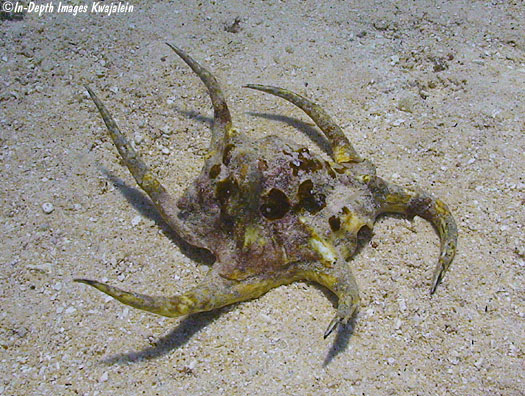
Harpago chiragra is the second largest of the Strombidae in the Marshalls, second only to Lambis truncata. It is common on both lagoon and seaward reefs, including the large flat-topped lagoon pinnacles. They are typically on sand or rubble, or sometimes on hard substrate. Adults are nearly always seen paired, with a large female accompanied by one, or rarely, a couple of smaller males. Like the large Lambis truncata, this species is protected (at least where divers from Kwajalein are concerned), although the initial protection recommendations from Fish & Wildlife and the Kwajalein Army regulations on the issue both misidentified it as Lambis scorpius, a very different and much smaller species. More comments about this under L. truncata. The individual in the first two photos below had unusually long and recurved "fingers."

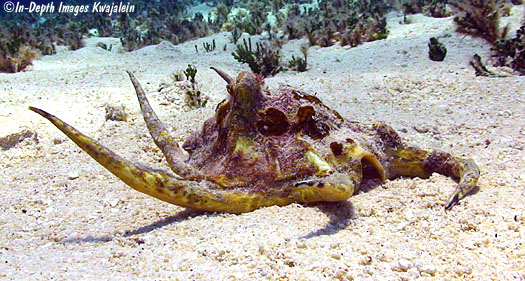
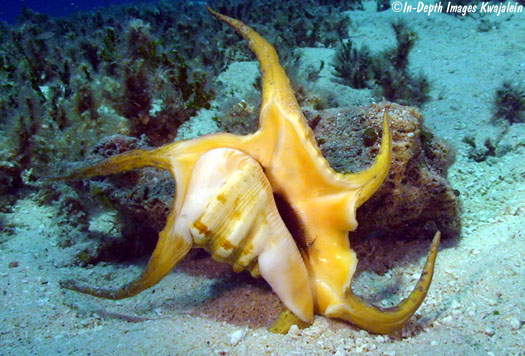
The eyeballs peek out over the opeculum in this aperture view.
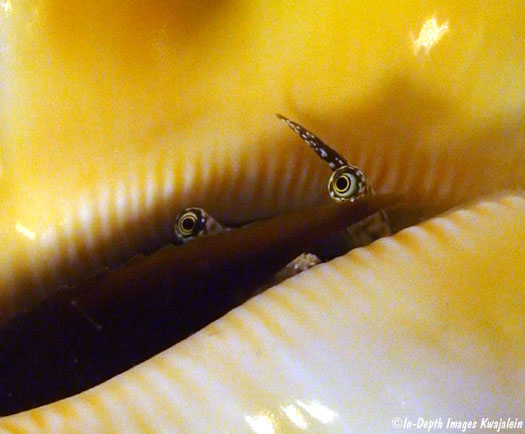
Juveniles have thin outer lips on the shell and lack the fingers.
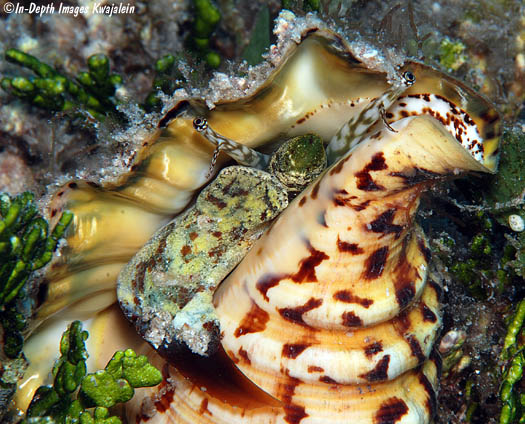
Here the green proboscis bearing the mouth can be seen between the two eye stalks in this juvenile specimen.
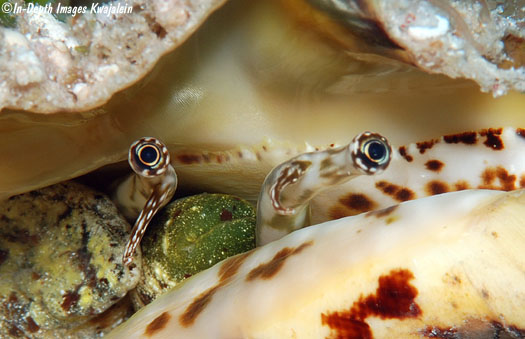
As the fingers develop, they remain hollow for a while until they eventually fill in.
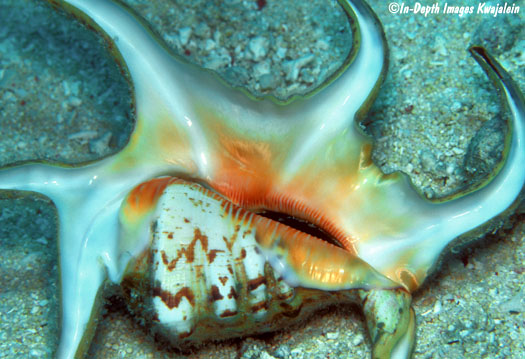
The specimen below was putting down an egg mass, seen as the whitish sandy area just to the right of the shell. Like some of the other Strombidae species, H. chiragra mixes up its eggs in a sand and mucus slurry the holds together while the eggs develop. What surprised me is that this female is still rather young, with fingers that have not completely filled out.
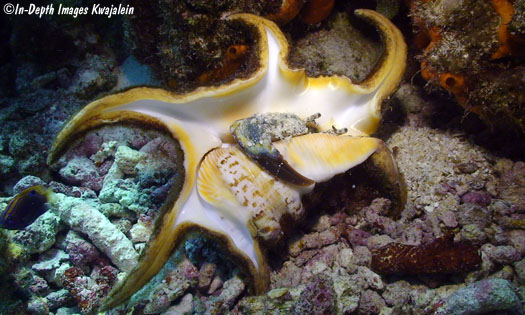
Here's another young one getting ready to flip.
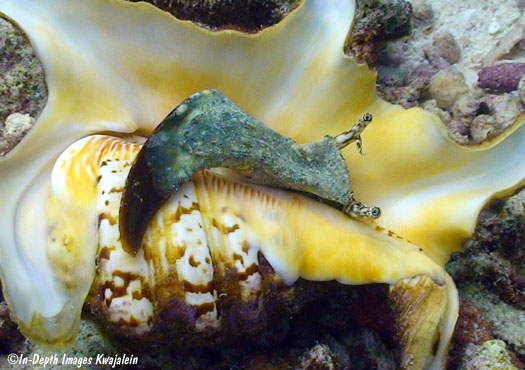
This poor beast's shell was completed coated with stinging fire coral, Millepora. I suspect it must have hurt to even put its eyes out the anterior channels in the shell.
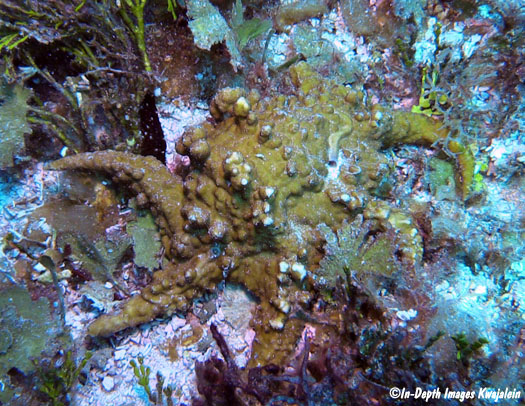
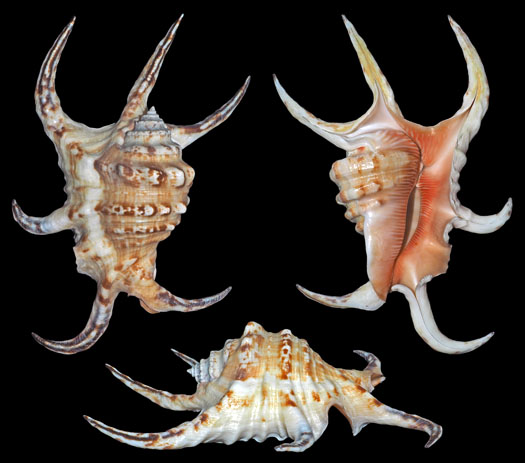
Created 1 October 2009
Updated 21 March 2020